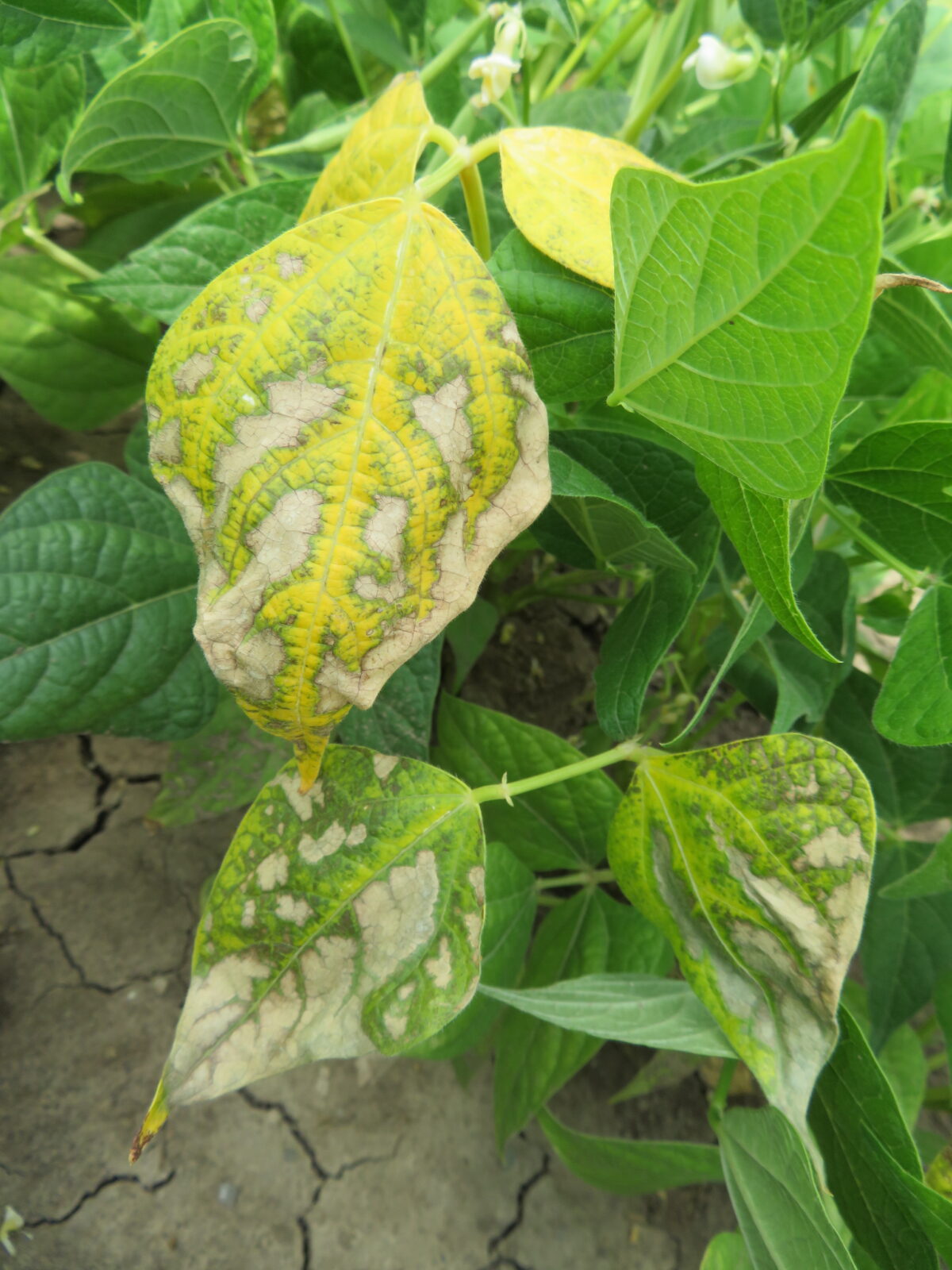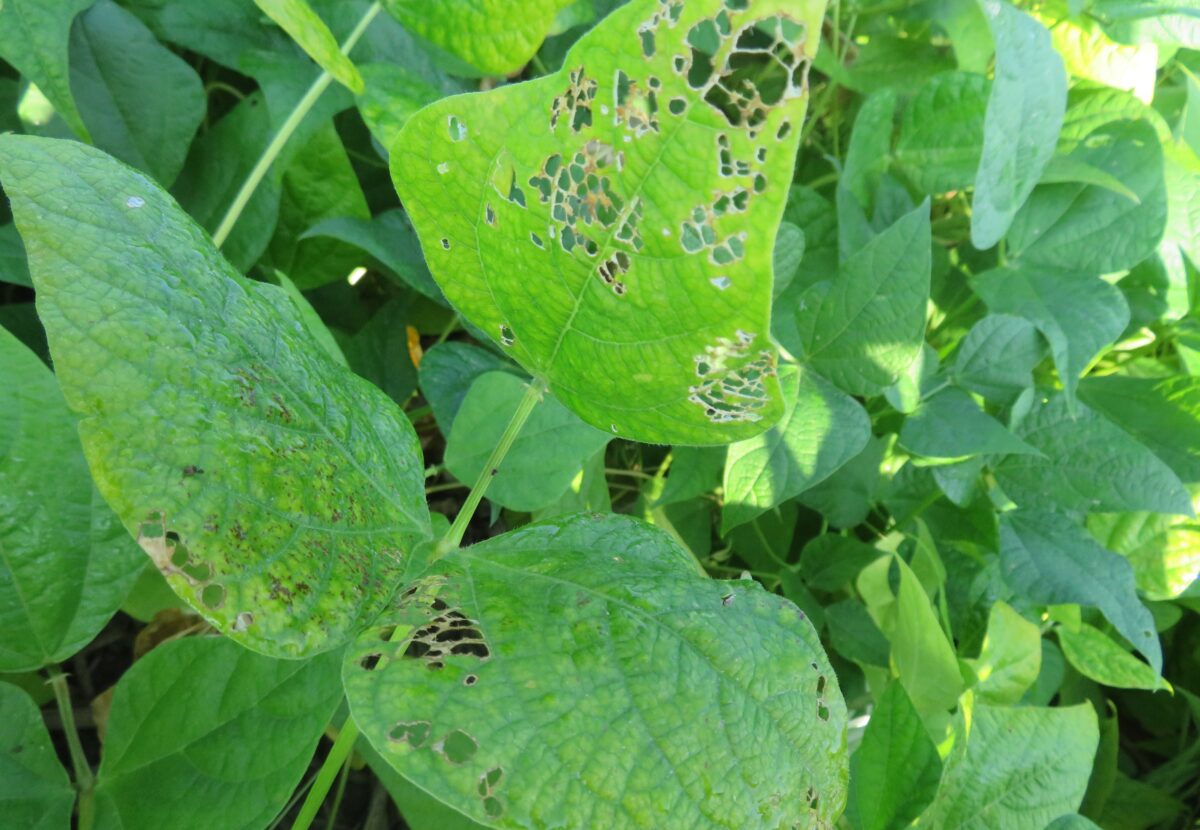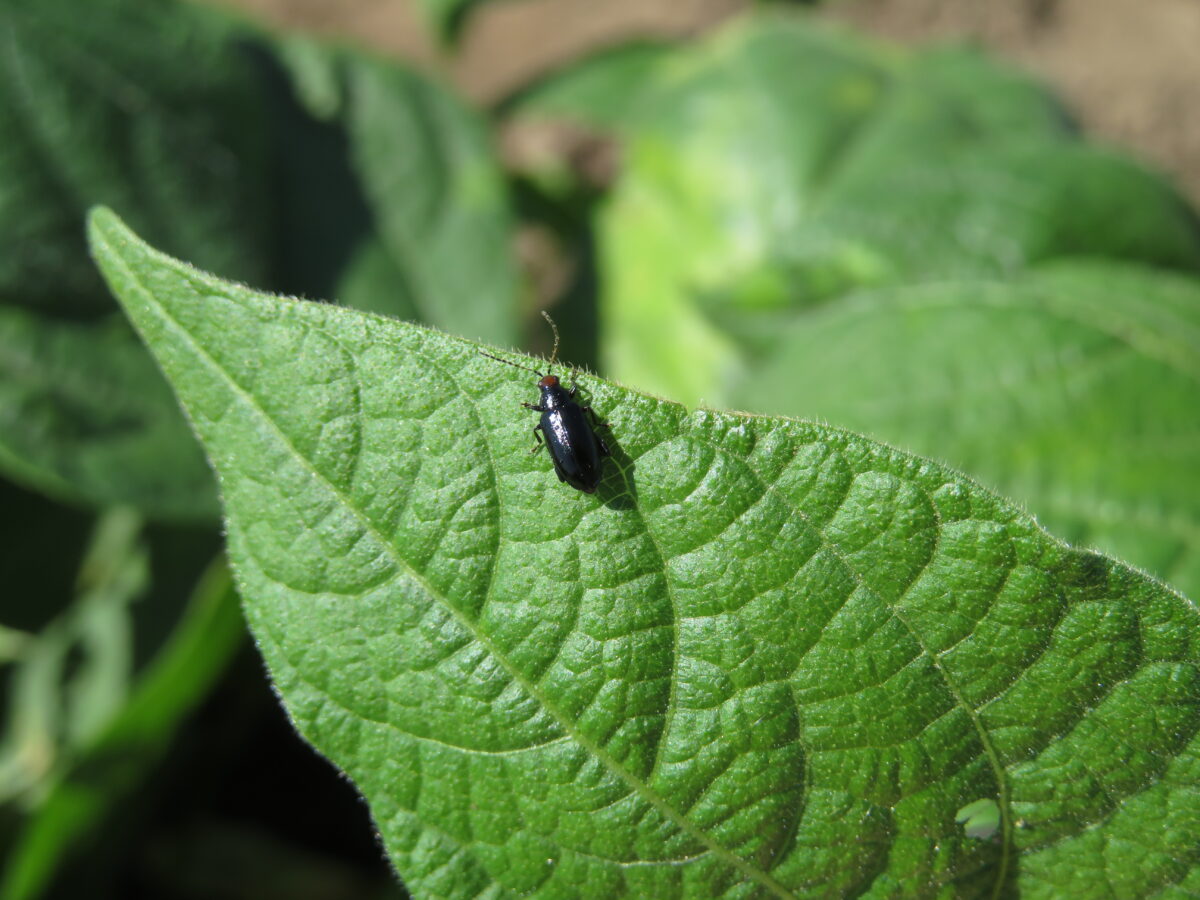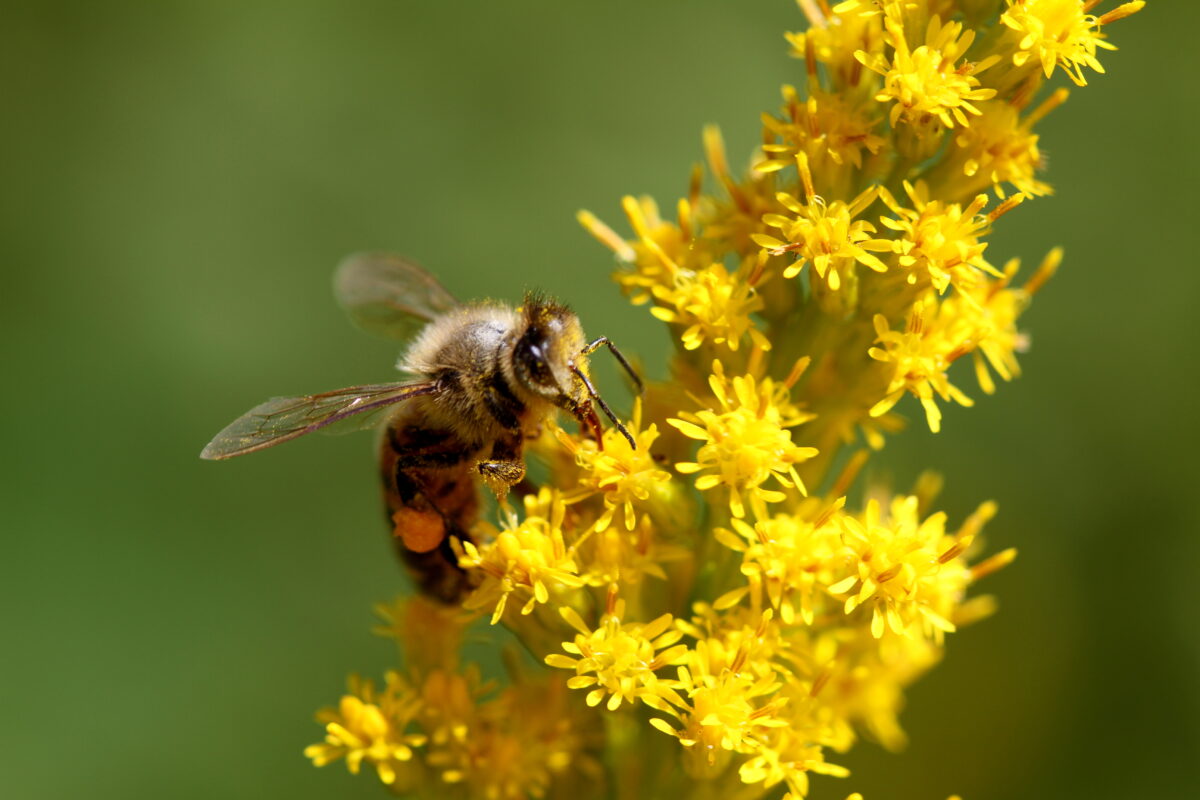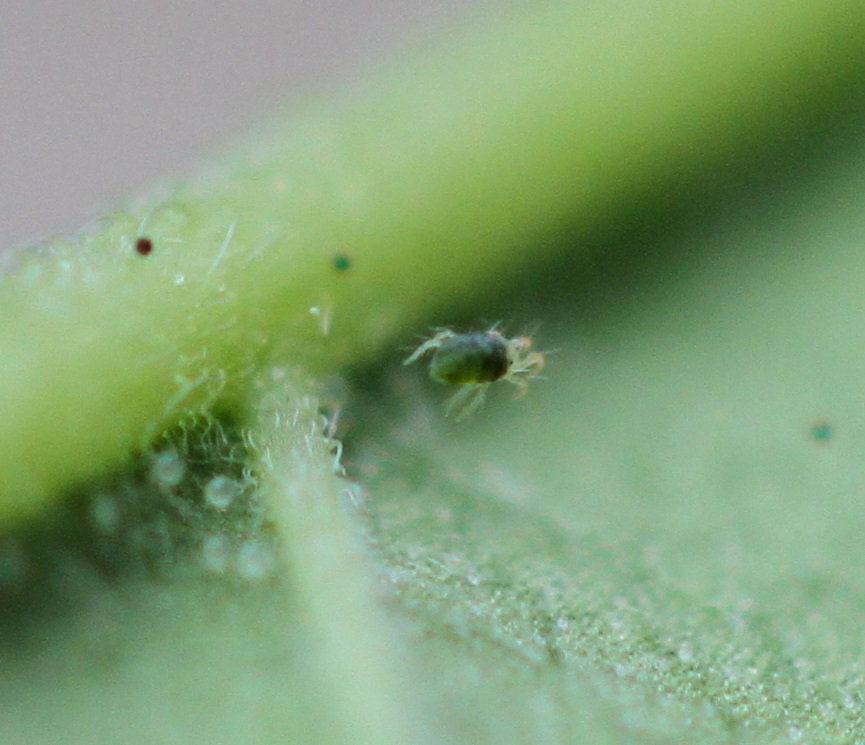Bacterial wilt is caused by the pathogen Curtobacterium flaccumfaciens pv. flaccumfaciens. Symptoms Interveinal chlorosis on leaflets leading to necrotic areas surrounded by yellow. Necrotic tissue may tear, giving ragged appearance. Necrotic tissue may fall away causing defoliation, or leaves may drop off in windy conditions. Plants will wilt and may look brown coloured from a…Continue readingBacterial Wilt
Bean Common Mosaic Virus (BCMV)
Incidence Bean common mosaic virus (BCMV) has been found wherever dry edible beans are grown in the province. In some years, the disease can be severe in individual fields. Appearance Infection of dry edible beans with the virus can cause various symptoms. Leaves of infected plants have a mosaic of light yellow-green and dark green…Continue readingBean Common Mosaic Virus (BCMV)
Assessing Defoliation Research conducted at the University of Guelph, Ridgetown Campus, indicates that prior to flowering, dry edible beans are able to tolerate up to 50% leaf loss with minimal loss in final yield. Complete defoliation prior to flowering delayed maturity by 30 days but lower levels of defoliation did not delay maturity. At later…Continue readingThresholds for Defoliating and Pod Feeding Insects
Red-Headed Flea Beetle
Red-Headed Flea Beetle (Systena frontalis) Description Adults are shiny black beetles, approximately 3–6 mm in length with large hind legs used for jumping. Their body tapers towards the head which is red-orange in colour and gives them their name. Their small white larvae live in the soil and go unnoticed. Life Cycle Little information is…Continue readingRed-Headed Flea Beetle
Western Bean Cutworm
Western Bean Cutworm (Striacosta albicosta) Description Western bean cutworm (WBC) larvae are tan to pink in colour. When they first emerge from their eggs, they resemble European corn borer with dark heads and beige bodies. Third instar larvae begin to appear like true armyworm, with distinct stripes along their bodies, but lack bands on their…Continue readingWestern Bean Cutworm
Protecting Pollinators and Beneficials
Honeybees, native bee species and other pollinating insects are important pollinators for many Ontario crops. Beneficial insects also play an important role in helping to keep pest populations below threshold. Protecting pollinators and beneficial insects requires careful management of insecticide use. Follow integrated pest management practices and use insecticides only when necessary. This approach can…Continue readingProtecting Pollinators and Beneficials
Promoting and Protecting Natural Enemies
There is an increased interest in “conservation biological control,” which involves managing the agricultural landscape to promote natural enemies and help suppress pest infestations – see OMAFRA Agronomy Guide for Field Crops for descriptions of natural enemies. Though much research is still needed in this area, there is evidence of some successful practices that can…Continue readingPromoting and Protecting Natural Enemies
Spider Mite
Two-Spotted Spider Mite (Tetranychus urticae) Description The adult mite is barely visible to the naked eye, roughly 0.5–1.0 mm in length, rounded, eight-legged and yellowish-brown with two dark spots on the sides of the abdomen. Nymphs look similar to the adults but are smaller. The larvae have six legs instead of eight. Overwintering females are orange/red.…Continue readingSpider Mite
Tarnished Plant Bug
Tarnished Plant Bug (Lygus lineolaris) Description Tarnished plant bug (TPB) adults are approximately 5 mm (0.2 in.) in length, mottled, yellowish-to-reddish-brown in colour and have a small triangle shape on their back. The nymph stage does not resemble the adults but can be misidentifed as aphids, although they lack the cornicles (“tailpipes”) that aphids possess.…Continue readingTarnished Plant Bug
Millipedes
Description Millipedes are not insects but arthropods. They are hard-shelled, cylindrical and approximately 2.5–5 cm (1–2 in.) long. They get their name (milli: thousands, pedes: legs) from having many legs — two short pairs of legs per body segment in the adult stage. Adult millipedes are dark reddishbrown to grey-black in colour and have hardened…Continue readingMillipedes
